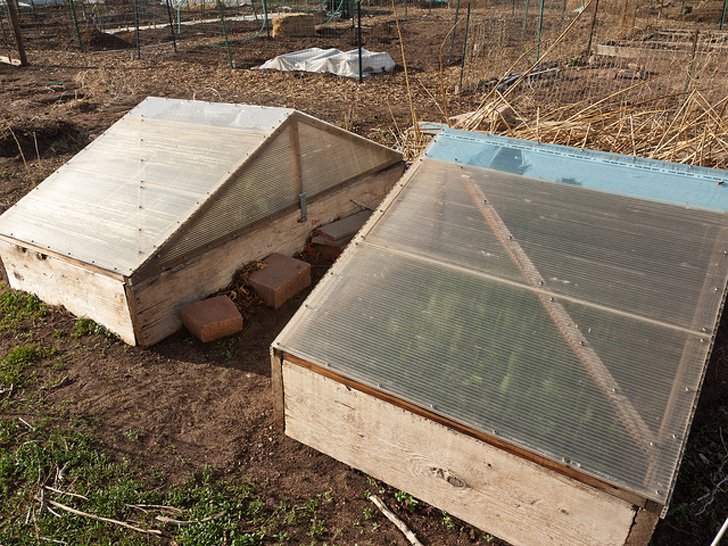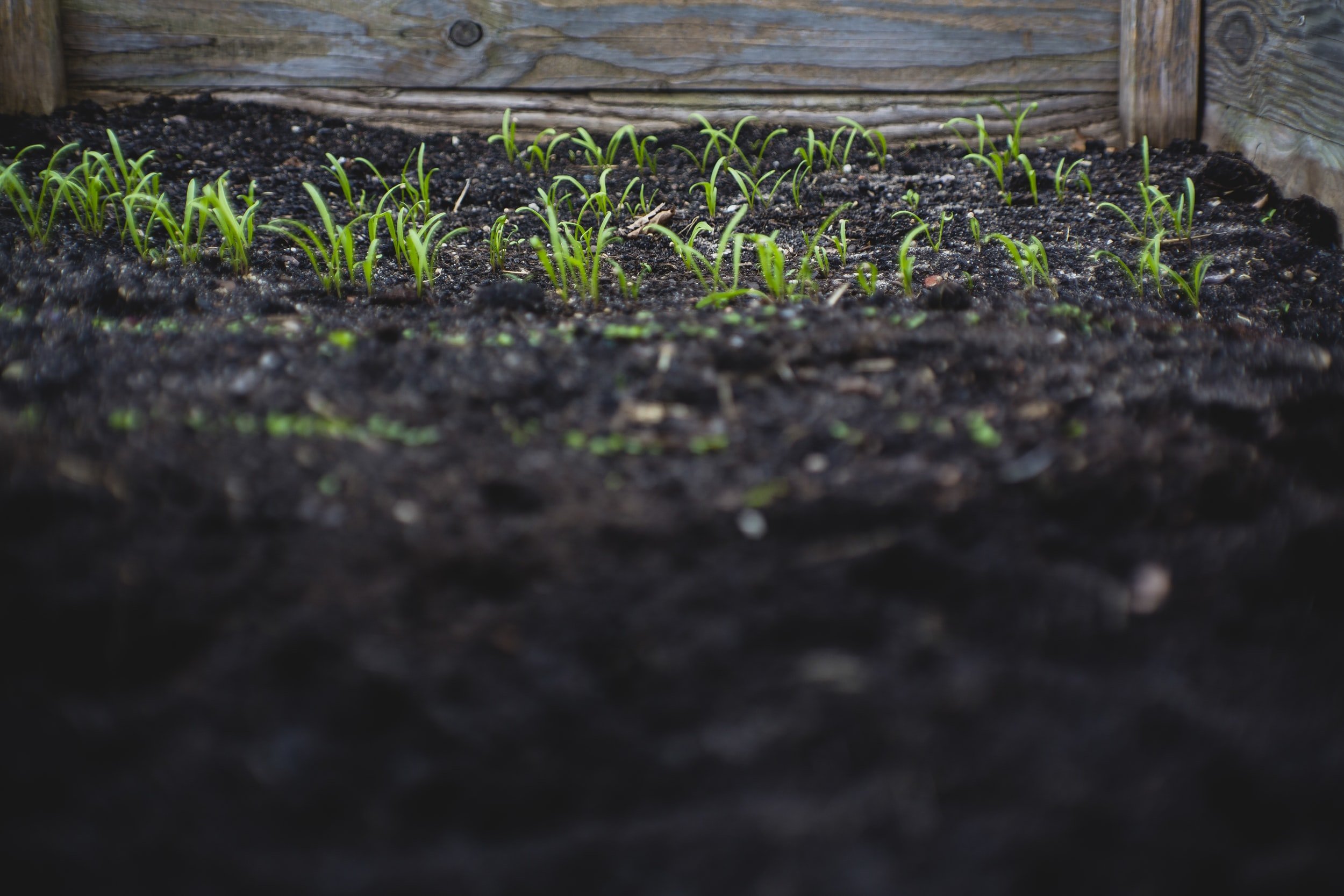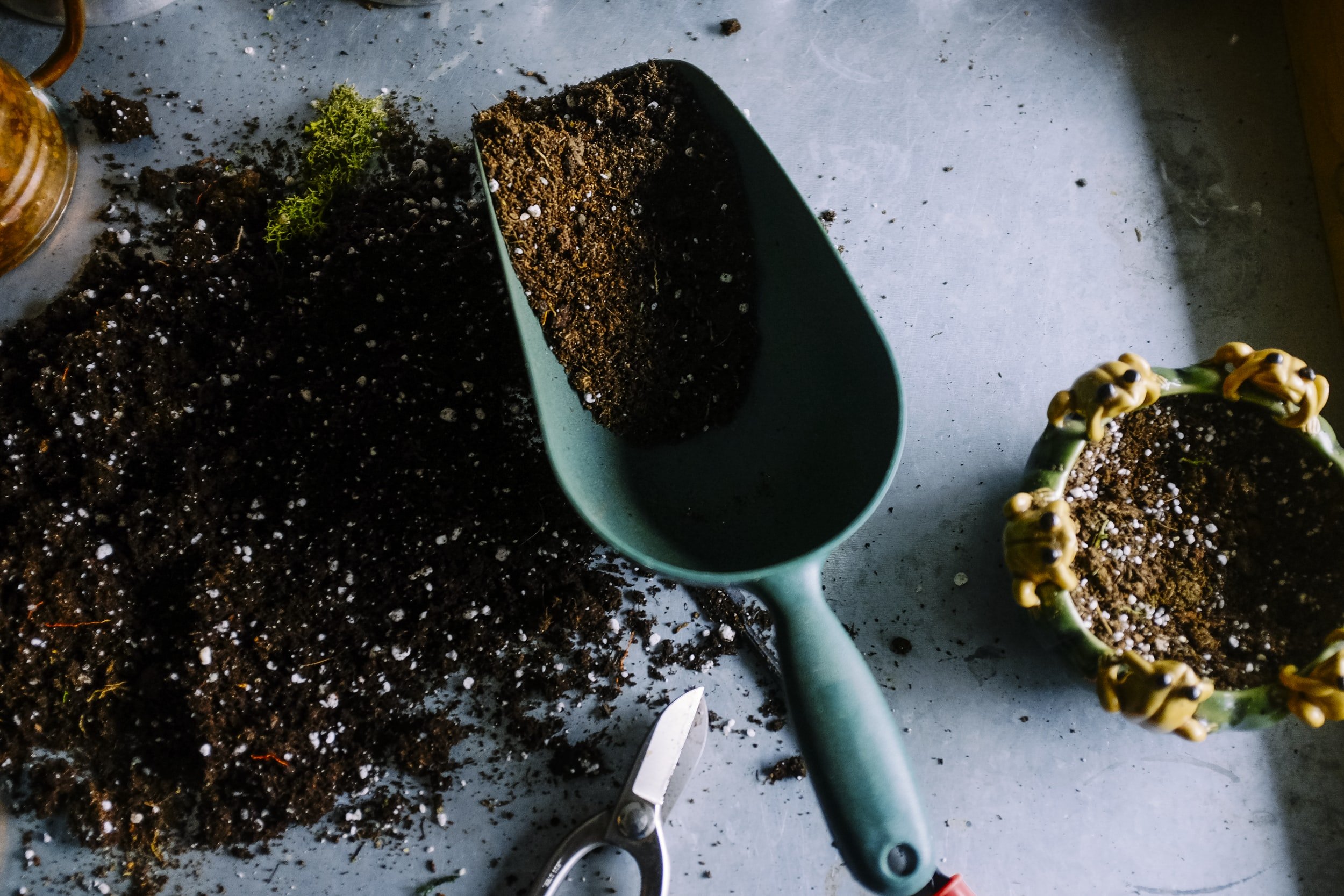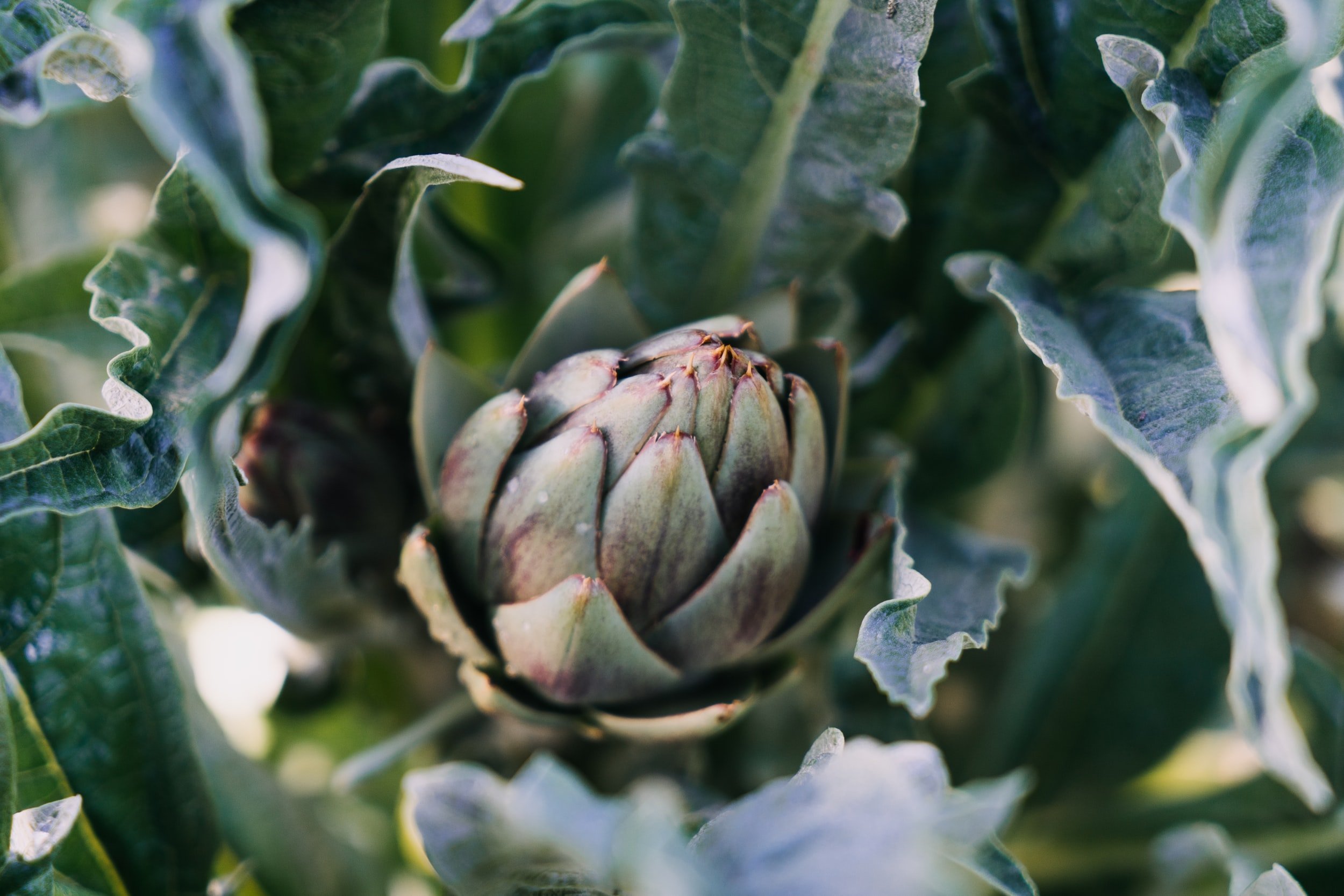Cold Frame Gardening: Everything You Need to Know
Always dreamed of a walkable greenhouse brimming with plants, but not about that price tag? Or perhaps don't have the space to build a full greenhouse or hoophouse?
Do you have a limited budget or garden space to work with?
Or maybe you want to extend the growing season well into late fall and even winter? The gardening cold frame (also known by its cheeky nickname, the poorman’s greenhouse) could be the perfect project to keep your green thumb satisfied in any season.
Despite their nickname, cold frames are not exactly the same thing as greenhouses. Cold frames for plants are also much lower maintenance than a whole greenhouse, which needs to be shoveled out and kept clean from bacteria and other pests.
**J&R Pierce Family Farm is a participant in the Amazon Services LLC Associates Program, an affiliate advertising program designed to allow sites to earn advertising fees by linking to products on Amazon. I often link to Amazon when recommending certain products, and if you choose to purchase, I may earn a small percentage of the sale. It costs you nothing extra, and all recommended products are ones that I personally vouch for. **
What is Cold Frame Gardening?
A cold frame garden box encloses a section of garden with a clear top that allows sunlight in to insulate your crops from the cold, prolonging your growing season.
Cold frames:
Are inexpensive and easy to set up
Can be used to start seedlings
Help harden plants off
Can overwinter crops to keep them alive until spring
Cold frames are handy for growing and keeping cold-weather plants well into late fall, winter, and early spring.
They also are used for sheltering plants from winds and snow.
Here's a video that will show you how to get started building a cold frame with materials like old windows and straw bales. It's a great way to extend your gardening season past just the spring and summer months - and to keep it going all winter long:
What Can You Grow in a Cold Frame?
Although cold frames help retain heat to keep your green darlings warm and safe from frost, it’s important to keep in mind that they don’t generate as much heat as a traditional greenhouse.
The air inside your cold frame box will be just slightly warmer than the air outside (a difference of about 5-10 degrees), so it's a good rule of thumb to know which plants are best suited to the cold frame life.
You will be thrilled to know that these veggies grow well in a winter box garden:
Plant these in summer to harvest them by the winter.
Carrots
Cauliflower
Beets
Beans
Brussels sprouts
Celery
Turnips
Scallion
Onions
Herbs
Salad greens such as chard, cabbage, arugula, kale, mustard, lettuce, mizuna, and spinach (directly sown into the cold frame)
Vine crops like tomatoes, cucumbers, squash, pumpkins, and even melons
Several types of popular flower varieties can thrive with cold frame gardening, including:
Petunias
Impatiens
5 Best Cold Frames to Buy
Cold frames come in many shapes and sizes to best suit whatever project you have planned. Whether you use a sunken cold frame, a plastic hoop tunnel, or a portable wooden frame with a hard plastic cover, each type of cold frame offers different levels of protection. Here are five of the best cold frames to buy for garden frost protection:
1. MCombo Greenhouse Wooden Cold Frame Greenhouse, Garden Portable Mini Greenhouse Cabinet, Raised Flower Planter Shelf Protection for Outdoor Indoor Use

This portable structure, made out of wood, is a great way to protect your plants from inclement weather. It is perfect for container plants that you need to keep warm in particular!
2. VegTrug Greenhouse Frame

When you're gardening in a raised bed, it can be tough to keep the growing season going even when there's snow on the ground. This simple cold frame will help protect your plants from all weather conditions, making it possible for you to get a harvest even when the spring and summer months have come and gone.
3. Giantex Garden Portable Wooden Green House Cold Frame Raised Plants Bed Protection (39.3"X24.8"X15.1")

If you'd rather buy than build a cold frame to use over your raised bed, this product will be one of the best options. It can protect both potted plants sa well as those grown directly in the ground.
4. Indoor Greenhouse - Greenhouses for Outside, Mini Greenhouse Kit, Green House, from Our Greenhouses for Outdoors Collection

This cabinet-style cold frame can be used for growing plants in all seasons, from spring to winter, and can even be used indoors.
5. Gardman 7650 Large Wooden Cold Frame, FSC Certified Timber Frame, 35" Long x 31" Wide x 35" High

With double lids for easy access, this wooden frame is the perfect cold frame to consider for all of your gardening needs.
5 Best Cold Frames for Raised Beds
Here are the best cold frames for covering your existing raised garden beds. These types of cold frames usually involve hoops and plastic sheeting to insulate crops and protect them from garden frost.
1. punada Premium Plant Cover Freeze Protection 8Ft x 24Ft Reusable Row Covers for Winter Frost Freeze Protection Blanket Anti-UV for Snow Animal 35ºF Frost Protection -0.74 oz/yd² (Frame not Include)

This cold frame is perfect for harnessing solar energy when you need to take advantage of it most - but it's also easy to get inside the cold frame to remove the plastic cover once it warms up. It's technically a blanket not necessarily a cold frame - but has everything you need to provide frost protection. These reusable row covers are incredibly versatile.
It comes with a plastic cover that can easily be removed along with an easy-to-install frame.
2. Outsunny 9' L x 3' W x 3' H Portable Tunnel Greenhouse Outdoor Garden Mini Hot House with Zipper Doors & Water/UV Cover

If you're interested in using a cold frame but aren't sure how it will hold up to heavy winds (and if it will be able to protect the plants inside), then this one by Outsunny is the way to go. It has a metal frame with a plastic cover so it is both sturdy and lightweight for use in all weather.
3. Tierra Garden 50-5000 Haxnicks Easy Poly Tunnel Garden Cloche, Giant

This plastic cloche is a hoop tunnel that can be installed and customized easily based on your needs. It has all the materials you need to get started using cold frames without being overly complex.
4. Tierra Garden 50-5080 Haxnicks Easy Seedling Tunnel (3-Pack) : Patio, Lawn & Garden

If you want to make sure your seedlings have access to solar energy, both for the warmer temperatures and sunlight, yet are looking for a structure that will protect the tender young growth then this option by Tierra Garden is a great choice. It will provide your young plants with all the warmth and light they need while also making sure the vegetables are sheltered from wind and pests.
5. Quictent 71" WX 36" D X 36" H Portable Cloche Mini Greenhouse, Large Zipper Doors Garden Green House - 50 Pcs T-Type Plant Tags Included (Green)

Last but not least is this cold frame from Quictent. It can protect your plants from cold weather with its zippered plastic cover and metal frame.
How to Use a Cold Frame
Are you interested in learning how to get started with cold frame gardening? This quick tutorial will tell you how you can use these mini-greenhouses to extend your gardening season and help make winter seem a little bit shorter!
1. If you’re starting from scratch, fill your gardening cold box with suitable soil and keep the frame closed and warm for up to two weeks before placing in your seeds.
2. You’ll need to get your plant babies prepared to live that cold frame life. Like getting your child a haircut before picture day, your plants will need a trim before they’re introduced to their new home. Cut them back as much as possible before the first frost comes in fall.
3. You’ll want to constantly monitor the temperature and ventilation of your cold frame setup. Be sure to keep both soil and air temperatures in mind for observation, with ideal soil temperature being around 70°F ( or 21°C for you Celsius nerds).
Air temperature for cool-season plants should be 65-70°F (18-21°C) during the day and 55-60°F (13-16°C) at night. Warm-season plants will need an air temperature around 65-75°F (18-23°C) during the day and 60°F (16 degrees°C) at night.
4. Just because it might be cold outside doesn’t mean it’s not possible for your plants to overheat inside your cold frame if left unattended. You can vent your cold frame if its internal temperature is too hot by raising the panel (also called the sash) on the side opposite of the wind to protect young plants. But be sure to lower it again early enough in the day to maintain enough warmth to last through the night. As your seedlings grow larger, you can harden your crops by leaving the sash open for the entire day. You should be sure to completely open or remove the sash on sunnier days.
If the interior of your cold frame becomes too cold, you’ll need to cover the frame with padding or straw. Who doesn’t like to be tucked in on a chilly day?
5. Plants should be watered early in the day in order to give them ample time to dry before nightfall, when temperatures may drop drastically. Be mindful not to overwater; only a little water is needed to keep the soil damp since the cold frame retains moisture
Does a Cold Frame Need to Be Airtight?
When you first get started with cold frame gardening, you might be wondering if it needs to be sealed up tight in order to protect your plants from winter weather.
The short answer is yes - for the most part.
A cold frame should be as airtight as possible during the evening when it’s colder.
During the day when it’s warmer, though, it should be vented to maintain humidity and keep your plants from overheating. You don’t want to cook your veggies just yet!
How to Keep a Cold Frame Warm at Night
Keeping a cold frame warm at night is pretty simple. Just brew up some hot cocoa, grab your coziest blanket, and curl up next to your cold frame with a good book you think your plants would enjoy.
Okay, just kidding. Sometimes we like to make sure you’re still paying attention.
Something to insulate your cold frame, such as a tarp or blanket, can be placed over the sash.
Hay bales or soil can be placed around the frame’s sides and a few filled water bottles can be placed inside since they will retain heat throughout the day. These techniques will help prevent frost from creeping in to damage your crops.
Can You Start Seeds in a Cold Frame?
Seedlings can either be transferred to a cold frame or started right within it as seeds. But make sure to use hardy vegetables when starting directly in your cold frame. More tender vegetables should be started indoors or in a greenhouse before they’re transferred to a cold frame.
When starting your seeds directly in a cold frame, pre-warm the soil by having the frame in place two weeks prior to sowing. If you’re transferring an indoor plant to a cold frame, you can begin six weeks earlier than would be normal. As always, you’ll need to monitor the temperature and moisture inside of your cold frame. Too much heat, wind, or heavy rain can easily wipe out your seedlings.
How to Make a Cold Frame DIY
Would you rather build a cold frame instead of buying one?
Building a cold frame from scratch will require you to first consider the parameters of your budget, space, and other requirements for a successful cold frame.
Would a more permanent side structure like wood or concrete suit you best, or something more portable like a cold frame built out of materials like old windows and straw bales?
To top off the cold frame box would you like a sustainable option, like reusing old window glass, or would you rather buy all new plastic or polycarbonate sheeting? Painting the interior walls white will also maximize the light coming in from the sun outside.
The dimensions of your cold frame will vary based on the parameters mentioned above, but 4 to 5 feet across is a good standard for ease of use. Remember to have the sash of the frame slope to the south in order to maximize its exposure to the sun. A garden cold box can also be placed along a south-facing wall in order to provide it with protection from the winds. This is the best cold frame orientation.
If there is no wall available to block the winds, a sunken cold frame will provide the best protection for your plants, since it utilizes the earth’s natural insulation and reduces possible air gaps.
What is the Difference Between a Greenhouse and a Cold Frame?
Cold frames are a cost-effective way of keeping your plants happy and warm when a pricey, bulky greenhouse isn’t an option for your garden. Cold frames also offer the ease of portability and are much easier to install and uninstall as the seasons demand.
While a greenhouse will keep your tender plants growing fully during the harsh winter months, a cold frame can only provide them with a safe place to remain dormant until it’s time for their spring growth again. Greenhouses typically have heating and ventilation systems to make this all possible.
Cold frames for plants are small structures that help extend the growing season by covering your plants with glass or plastic to protect them from the cold weather. Since cold frames don’t generate the same amount of heat as a traditional greenhouse, you want to choose plants and veggies with that in mind, with hardier ones doing best.
When using a cold frame, you need to constantly monitor the temperature and moisture, making sure to vent the sash when it’s hot outside and add extra insulation when it’s cold.
Also make sure your cold frames are as airtight as possible when it’s cold out. Keeping a cold frame warm at night just requires a little added insulation from a tarp or a blanket. Seeds can be started directly in the garden cold box, but make sure to pre-warm the soil by learning it shut for two weeks prior to sowing.
Building your own cold frame requires you to consider many factors, like would you like a temporary structure or a permanent one?
Cold Frame vs Greenhouse: Pros & Cons
Cold Frame Pros
Can be used in smaller spaces where a greenhouse would not easily fit
Cold frames can give you more time to garden on your terms rather than on seasonal demands. You can get a head start on your growing season early or prolong your crops’ lifespan beyond its traditional season
Cold frames are a cheaper alternative to a greenhouse, with a myriad variety of building materials to match any budget without sacrificing effectiveness. There’s even a type of cold frame that can be crafted with a simple plastic soda bottle!
Protect dormant plants over the winter so you don’t need to invest time and money on planting new seeds come spring
Cold frames can be endlessly customized to match your style as well as your garden needs. Decorating your cold frame can be a fun activity to share with your family.
Seeds can germinate in a cold frame but not in a greenhouse
Cold Frame Cons
The ability to manage growing conditions is limited compared to a greenhouse, which allows you to walk into the space and make adjustments as needed
Less protection from sudden temperature changes due to lower air volume
Cold frames require more humidity regulation than a greenhouse
While cold frames protect your garden from the elements, they still need to be kept to a precise watering schedule. Pay close attention to your soil to ensure it's not too wet or consistently dry.
Decide which cold frame is right for you and get started on building your winter-proof garden today! Still feeling overwhelmed by the options? Make a pro and con list for your garden to decide which type is best for you.
Do you use a cold frame in your garden? Let us know your thoughts and experiences in the comments!
Want to learn more about farming? Be sure to check out these featured articles!
Subscribe to our email newsletter for regular tips and tricks on homesteading – wherever you are. You can also follow us on Instagram (@jrpiercefamilyfarm) and Pinterest (J&R Pierce Family Farm) for frequent updates. Happy homesteading!








